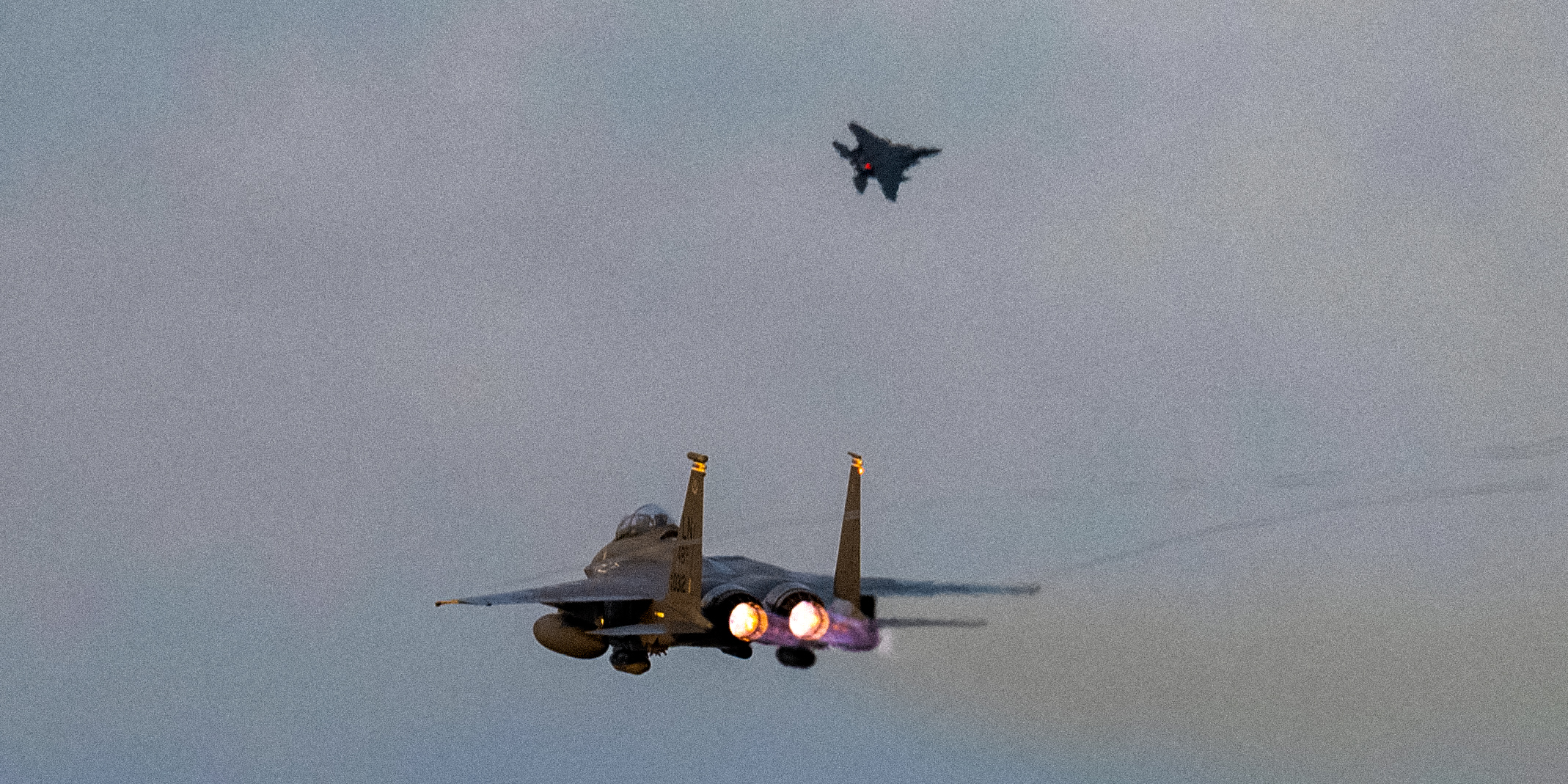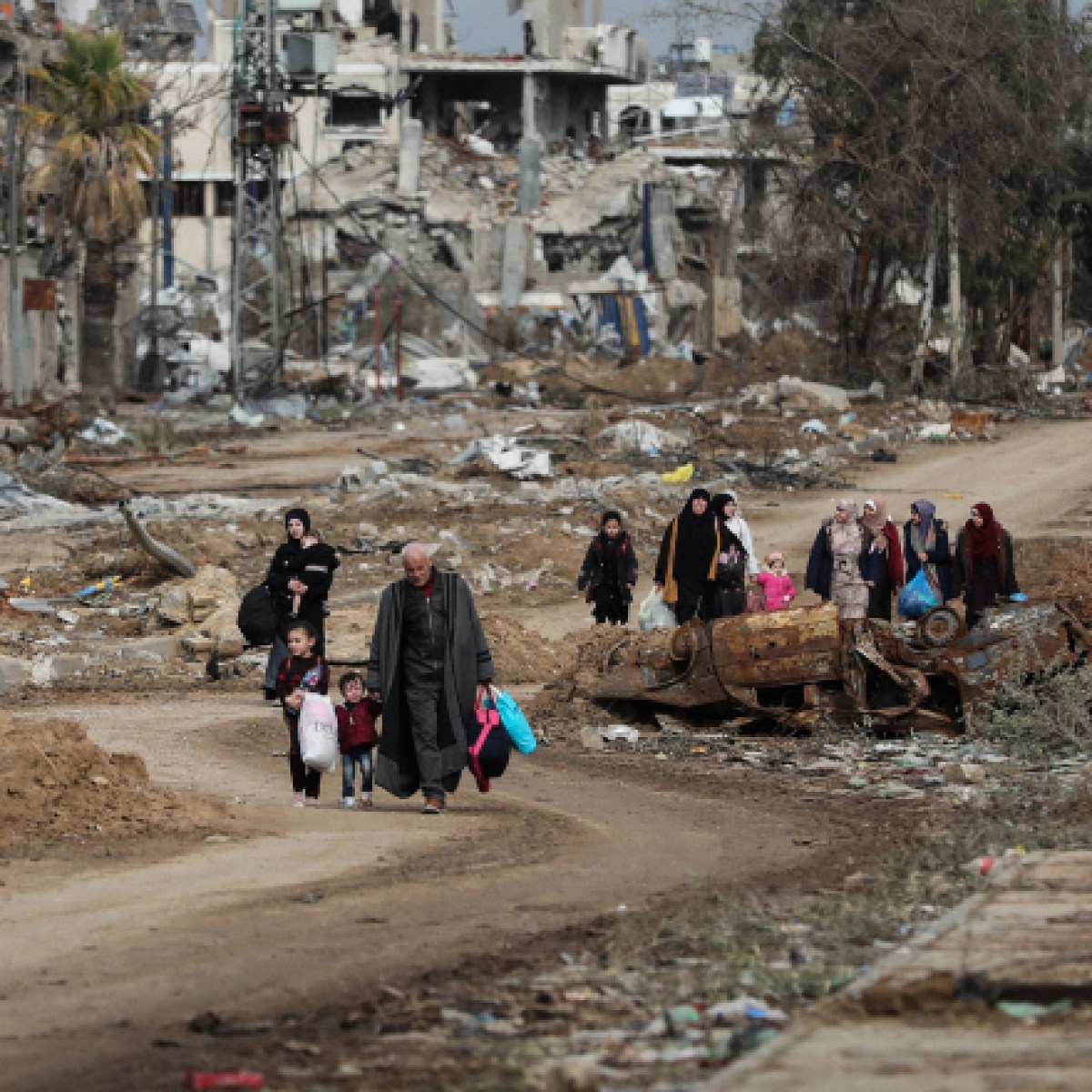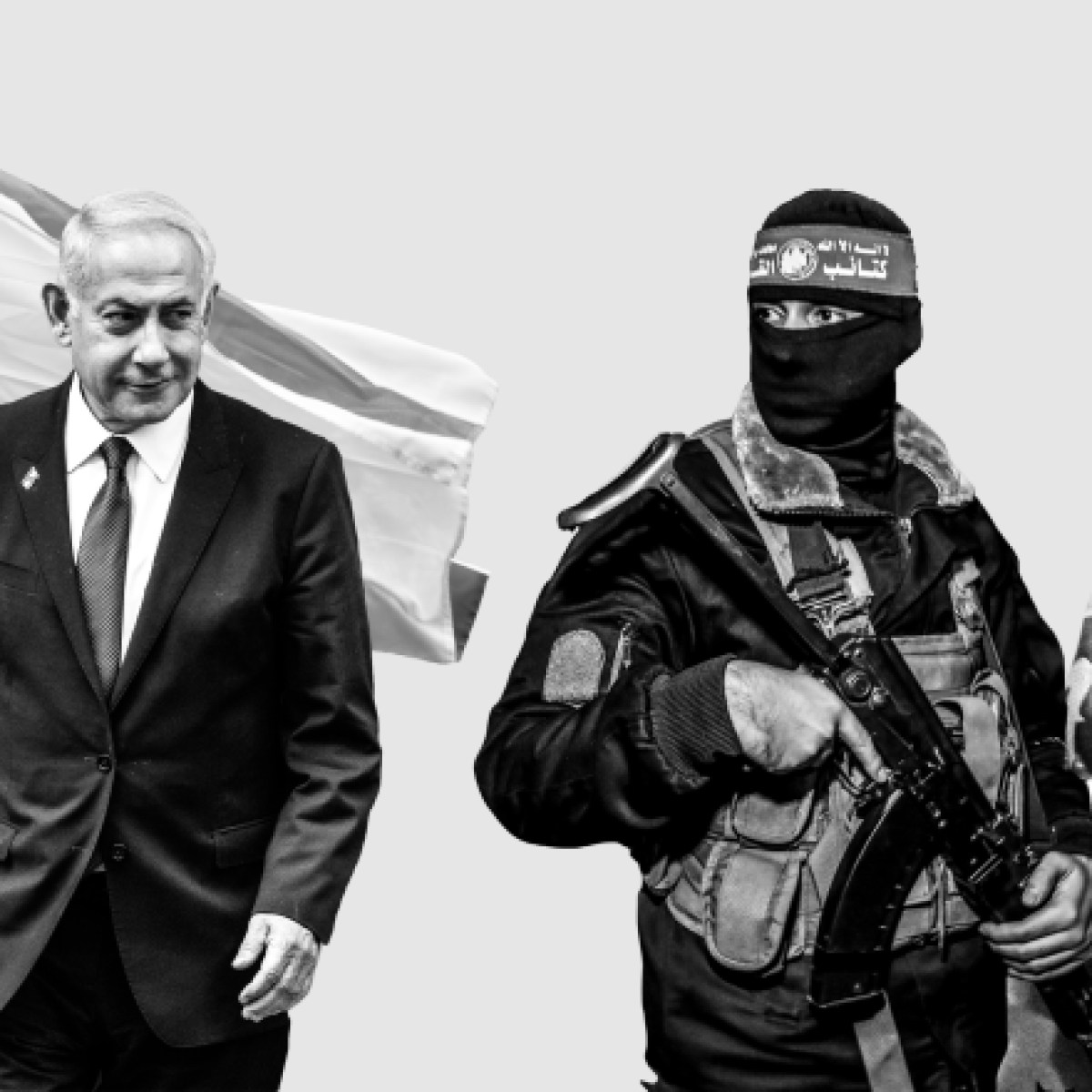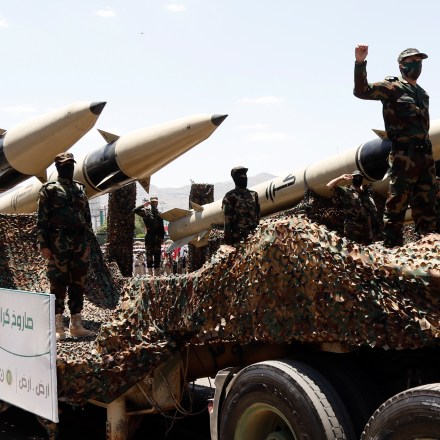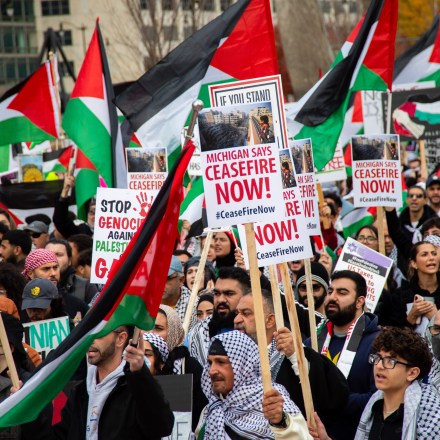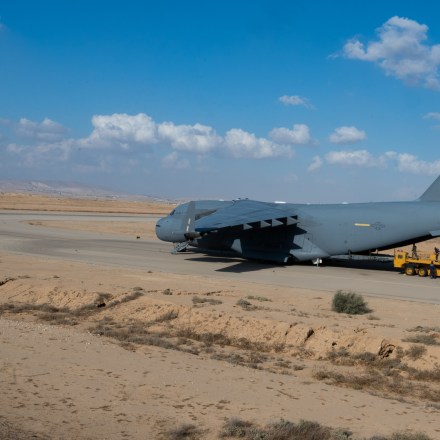The U.S. military has deployed thousands of troops to the Middle East since Hamas’s surprise October 7 attack on Israel but refuses to disclose the military bases or even host nations of the deployments — not for security reasons, but to spare the host nations embarrassment.
One such base, the Muwaffaq Salti Air Base in Jordan, welcomed several new F-15 attack jets last month, the same aircraft used to bomb facilities used by Iranian-backed militias in Syria at least twice since October, following attacks on U.S. troops by groups supported by Iran.
“A confluence of factors are driving the U.S. and Iran towards a direct military conflict, including the buildup of forces.”
Despite the hostilities, the Pentagon has declined to acknowledge the base or the military buildup taking place on it for political reasons, even as the growing U.S. presence and increasing activities contribute to rising tensions with Iran.
“A confluence of factors are driving the U.S. and Iran towards a direct military conflict, including the buildup of forces, the retaliatory actions in Syria by U.S. forces, and Iranian proxies’ provocations,” Bruce Riedel, nonresident senior fellow at the Brookings Institution, told The Intercept. “It is a dangerous situation.”
Government records reviewed by The Intercept, along with open-source data, reveal that Muwaffaq Salti continues to act as a low-key U.S. military base central to growing tensions with Iran.
“The main hub for U.S. air operations in Syria is now Muwaffaq Salti Air Base in Jordan, but the American presence is unacknowledged because of host country sensitivities,” said Aaron Stein in a 2021 report by the Foreign Policy Research Institute.
Named after Jordanian Lt. Muwaffaq Salti, a pilot who died fighting the Israeli air force during a conflict involving the West Bank in 1966, it isn’t hard to see why the U.S. government doesn’t want its presence on the air base public. Jordan, a nation home to over 2 million Palestinian refugees, is being rocked by protests opposing Israel’s military operation in Gaza.
“Tit-for-Tat Exchanges”
As the U.S. spirals toward a potential regional war with Iran that could dwarf the casualties in Israel’s war on Gaza, the American government has withheld from the public knowledge of where U.S. troops are in harm’s way.
At the time of this writing, there have been 55 attacks on U.S. service members in Iraq and Syria since October 17, according to the Pentagon, resulting in 59 injuries, including traumatic brain injuries.
Secretary of Defense Lloyd Austin in a press conference Monday emphasized how unclear the endgame of the attacks is to the U.S. military.
“It’s been tit-for-tat exchanges and hard to predict, you know, what will happen going forward,” Austin said.
Experts say the U.S. deployments may not only fail to deter Iranian attacks, they might also invite them.
“Enlargement of the U.S. military presence in the Middle East increases the risk of armed conflict with Iran because it means more potential points of hostile contact between U.S. troops and armed elements allied with Iran,” Paul Pillar, a nonresident fellow at the Quincy Institute, told The Intercept. “As has been the case with U.S. military components in Iraq and Syria, such a presence serves less as a deterrent than as a convenient target for anyone in the area who wants to strike at the United States.”
“Undisclosed Location”
“Yeah, undisclosed location in the Middle East,” Pentagon press secretary Brig. Gen. Pat Ryder told a reporter asking about the location of U.S. troops being deployed to the region during an October press briefing.
“But nice try,” Ryder taunted.
The exchange is representative of the Pentagon’s response to questions from the press about the U.S. military buildup. (The Pentagon did not respond to multiple requests for comment from The Intercept.)
“Can we say in some Arab countries or Gulf?” another reporter asked about the deployments.
“Yeah, I can’t go into specific locations,” Ryder replied.
Elias Yousif, a research analyst with the Stimson Center’s Conventional Defense Program, said, “Washington is trying to provide some plausible deniability to host countries at a time when association with the United States is coming to be seen as a political liability.”
Despite the secrecy, photographs released by the Defense Department showing F-15s landing at what it described as an “undisclosed location” were quickly geolocated by open-source researchers and shown to be Muwaffaq Salti Air Base.
“Washington is trying to provide some plausible deniability to host countries at a time when association with the United States is coming to be seen as a political liability.”
Secrecy runs rampant in U.S. efforts linked to the Israeli war against Palestinians in the Gaza Strip. Little is known about the quantity and nature of the weapons the U.S. military has provided to Israel, despite the Pentagon’s willingness to disclose an itemized list of military support for Ukraine, as The Intercept previously reported.
Clues about Muwaffaq Salti are scattered throughout federal records, including a reference to the base in the annex of a controversial defense cooperation agreement signed by the U.S. and Jordan in 2021. The agreement, which authorizes how the U.S. military is able to operate within the country, was enacted by royal decree, bypassing Jordan’s parliament.
Even before Israel’s war on Gaza, the U.S. presence in Muwaffaq Salti was expanding. In December 2021, the Pentagon launched a major upgrade to the air base in order to, as Janes Defence Weekly put it, “turn it into a more permanent base.”
